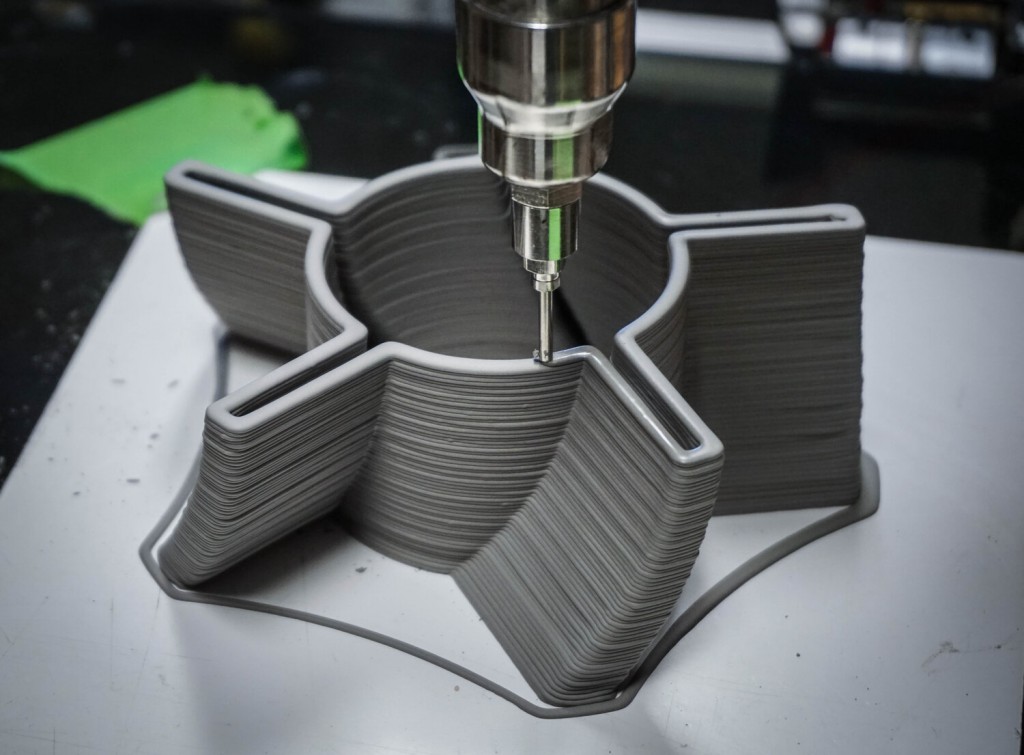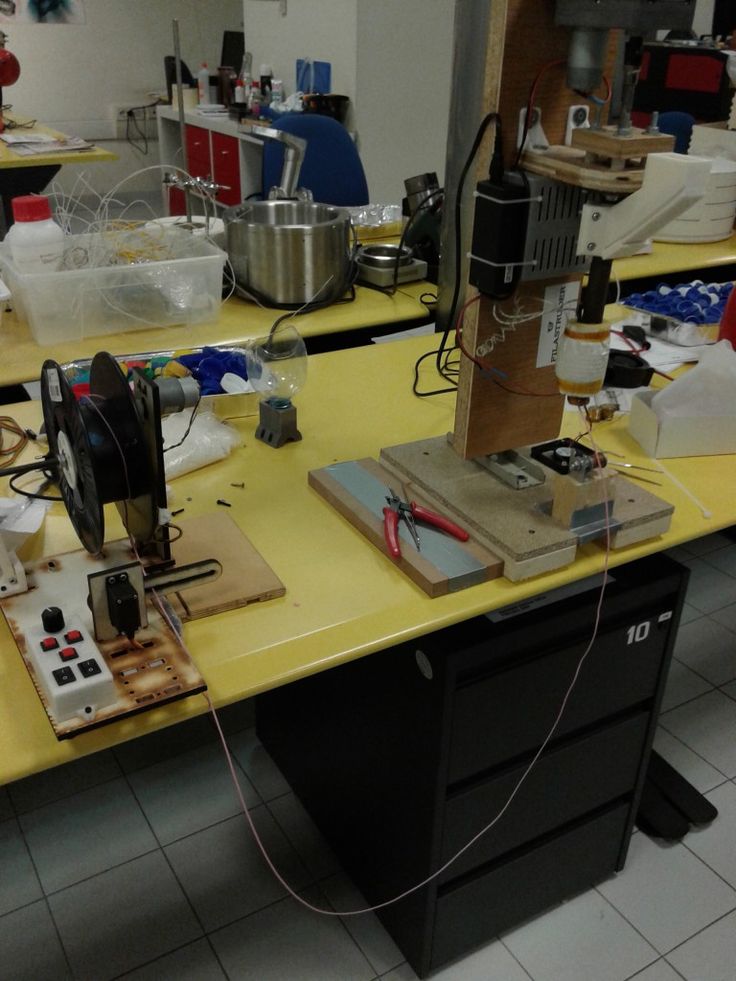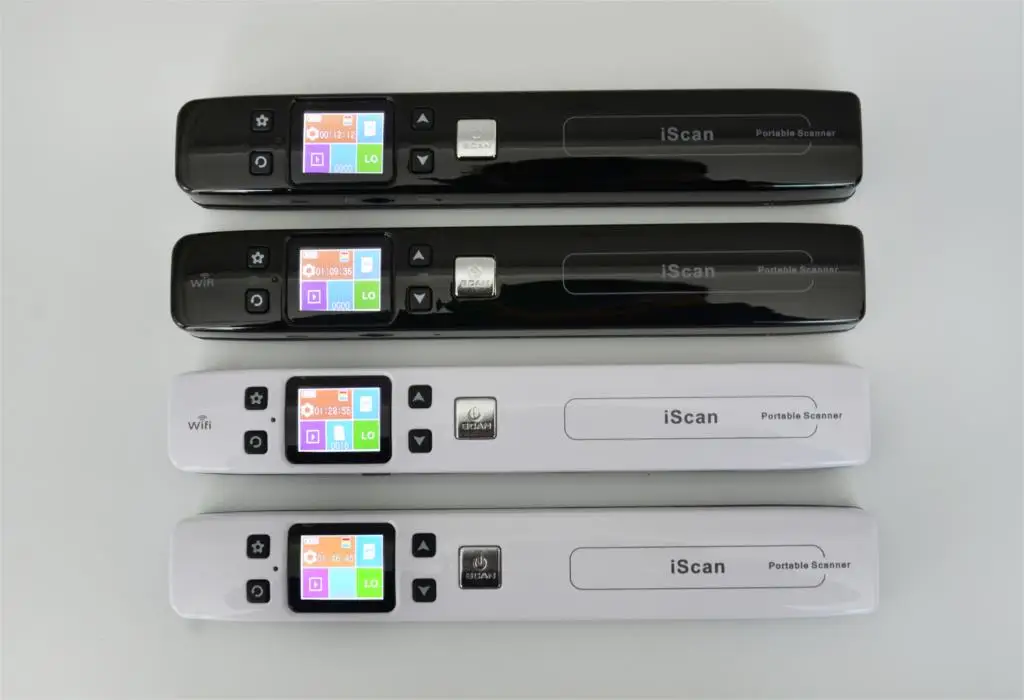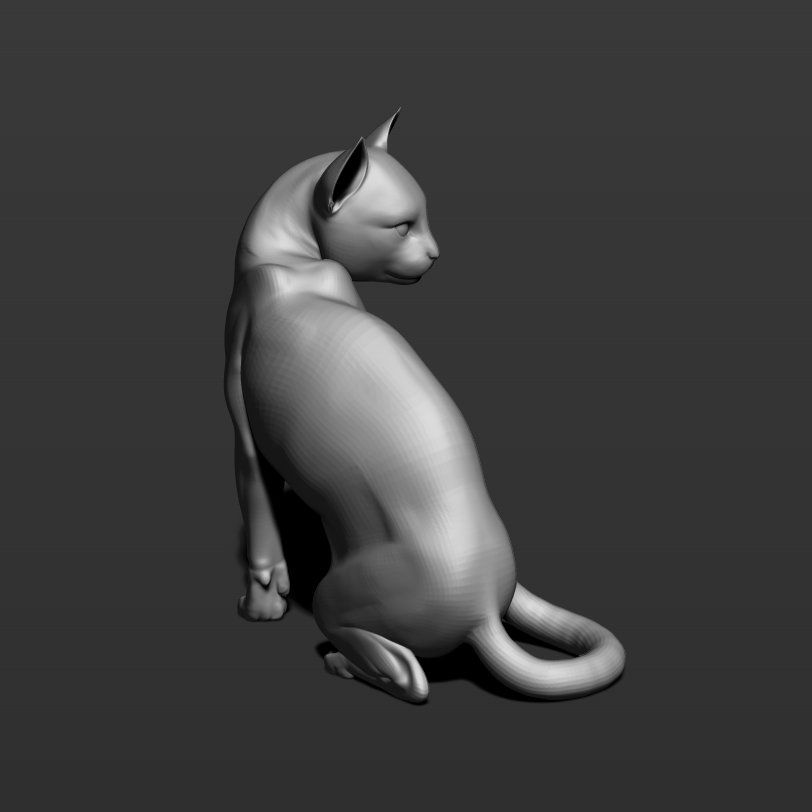3 exciting 3d printing companies in metals
5 companies leading metal 3D printing
3D printing with metal is a difficult business. The temperatures required to melt metals are in the range of 1500°C, providing understandable limitations to the spread of this technology. Whilst major breakthroughs have recently been made in industrial 3D printing with metal – note for example Siemens’ 3D printed gas turbine blades and NASA’s bi metallic rocket fuel injector – the technology has been slow to adapt to the general manufacturing sector. That is, until now.
As metal 3D printing technology becomes more suitable for the mass market, DISRUPTIONHUB takes a look at five companies leading the way.
1) Desktop Metal
Based in Massachusetts, USA, Desktop Metal’s aim is to bring down the cost and production time of 3D printing metal objects. Although only founded in 2015, the company has already received significant funding from Google, BMW and GE, with a further $65 million investment from Ford in March this year. Their proprietary Studio System covers the full product lifecycle of a 3D printed metal object, from prototyping to mass production. The technology is the first office friendly metal 3D printing system for rapid prototyping, and is ten times faster than existing technology.
2) Digital Metal
Digital Metal offers solutions to the manufacture of small and complex metal components. With applications in the medical and dental industries, aerospace and the luxury items market, Digital Metal ensures that 3D printing is competitive when compared to traditional mass production techniques. The company offers its own unique form of binder jetting technology – a 3D printing technique where a binding agent is used to bond layers of material together. The UK’s National Centre for Additive Manufacturing has recently added a Digital Metal printer to their armoury. At present, this technology is not available anywhere else in the UK.
3) Markforged
Markforged’s Metal X 3D print system is an end to end manufacturing solution which takes its clients from design to fully functional metal parts in under 24 hours. At only $100,000, the Metal X printer costs far less than most industrial metal 3D printers. Individually printed parts are also cheaper to produce. Manufacturers of aircraft brackets can make a 98 per cent saving when compared to the cost of traditional machined parts. There are also significant time saving benefits too, with most items ready to be delivered to manufacturers the next day. Whilst the Metal X printer offers benefits on price, its limited print volume does mean that it is only suitable for relatively small parts.
At only $100,000, the Metal X printer costs far less than most industrial metal 3D printers. Individually printed parts are also cheaper to produce. Manufacturers of aircraft brackets can make a 98 per cent saving when compared to the cost of traditional machined parts. There are also significant time saving benefits too, with most items ready to be delivered to manufacturers the next day. Whilst the Metal X printer offers benefits on price, its limited print volume does mean that it is only suitable for relatively small parts.
4) Sciaky
Sciaky was founded in Chicago in 1939, making it one of the oldest 3D printing companies. Sciaky’s Electron Beam Additive Manufacturing (EBAM) technology was launched in 2009, and the company has since released a total of five metal 3D printers. These huge machines are ideal for producing large scale, high value metal parts of up to 19 feet in length. As well as using metal powders as printing materials, the technology is also capable of printing from metal wire feedstock.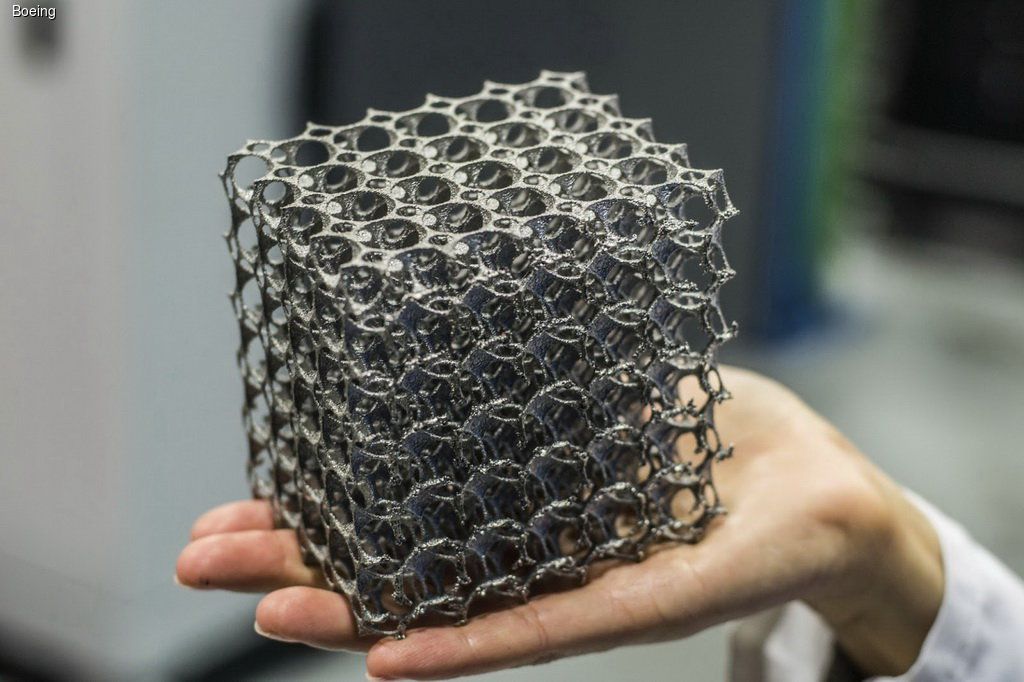 In general, this offers a wider selection and greater availability of metal materials for 3D printing.
In general, this offers a wider selection and greater availability of metal materials for 3D printing.
5) Renishaw
Renishaw is a British company based in Gloucestershire, UK. They specialise in the creation of 3D printers which are capable of rapidly producing bespoke, lightweight metal parts. Renishaw’s printers are compatible with a range of different metals and alloys, including titanium, aluminium, cobalt, stainless steel and nickel. The company recently collaborated with British bicycle designer and manufacturer Empire Cycles, to create the first ever 3D printed metal bicycle frame. The titanium mountain bike frame is around 33 per cent lighter than its traditionally manufactured counterparts. Other industry applications for Renishaw’s technology include the creation of luxury watches, customisable mountain bikes and a nose tip for a supersonic car.
The Top Metal 3D Printer Manufacturers in 2022
3D printing news News A Comprehensive List of All the Metal 3D Printer Manufacturers
Published on February 25, 2021 by Jamie D.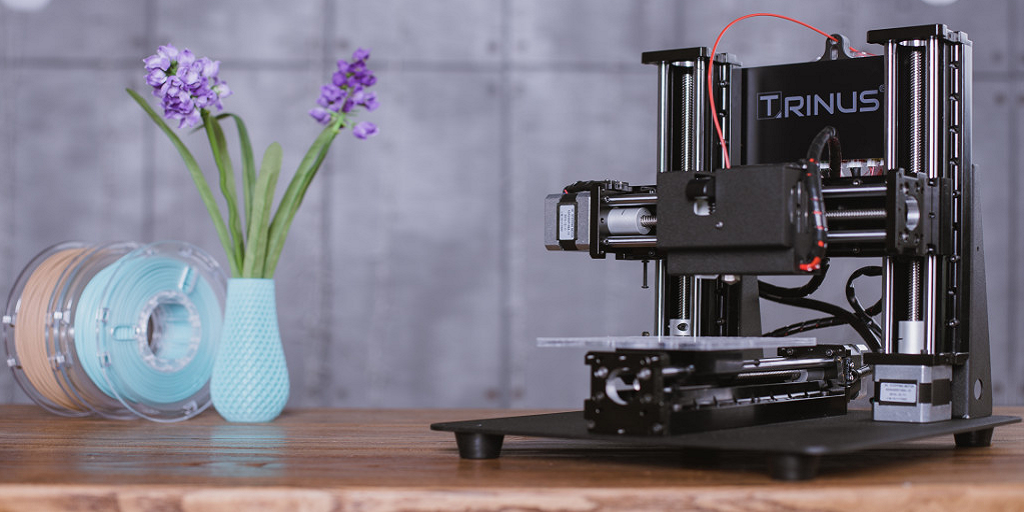
Metal 3D printing has been one of the most outstanding developments in the AM industry in recent years. In 2018, Wohlers Report reported that 80% more metal 3D printing solutions had been sold compared to the previous year – today, this figure continues to grow. An important number of new market players are joining the market, developing new 3D printers and new technologies. In recent years, more than 40 manufacturers of metal 3D printers have emerged. Many of these manufacturers have introduced new technologies to deal with this material such as HP’s Multi Jet Fusion or XJet’s Inkjet technology, for example. Today we present to the main manufacturers of metal 3D printers, we have classified them given the additive manufacturing technology used: Powder Bed Fusion, Directed Energy Deposition, Material Extrusion or Binder Jetting. We have updated it with some new players in the field!
Metal 3D Printer Manufacturers: Powder Bed Fusion (PBF)3D Systems Offers Metal 3D Printers Among Other Solutions3D Systems, was part of the first companies to enter the 3D printing market, introducing the first technology stereolithography (SLA) in the 80s. Today it generates more than $600 million in revenue per year thanks to the multitude of 3D printers it has developed. In 2013, it purchased the French printing brand Phenix Systems to expand into the metal segment. Its metal 3D printers use technologies called Direct Metal Printing (DMP) to build parts. They use a high-precision laser that solidifies metal powder placed on a bed. Their range of 3D printers includes the DMP Factory 500 Solution, DMP Flex 350, ProX DMP 300, the ProX DMP 200, the DMP Factory 350, DMP Factory 500 Solution and 3D printers in the dental sector such as the DMP Dental 100.
Today it generates more than $600 million in revenue per year thanks to the multitude of 3D printers it has developed. In 2013, it purchased the French printing brand Phenix Systems to expand into the metal segment. Its metal 3D printers use technologies called Direct Metal Printing (DMP) to build parts. They use a high-precision laser that solidifies metal powder placed on a bed. Their range of 3D printers includes the DMP Factory 500 Solution, DMP Flex 350, ProX DMP 300, the ProX DMP 200, the DMP Factory 350, DMP Factory 500 Solution and 3D printers in the dental sector such as the DMP Dental 100.
One of 3D System’s metal 3D printers part of the ProX DMP range
AddUp, Metal 3D Printers Using LBMFounded in 2016 as a joint venture between Michelin and Fives, AddUp developed its first 3D metal printer called FormUp 350. This 3D metal printer is based on Laser Beam Melting (LBM) and can produce metal parts up to 350 x 350 x 350mm. This brand is Michelin’s official entry into the additive manufacturing industry after using 3D metal printers for its products for many years. The FormUp 350 can manufacture pieces from stainless steel, nickel, titanium alloys and aluminium alloys.
The FormUp 350 can manufacture pieces from stainless steel, nickel, titanium alloys and aluminium alloys.
Arcam is a company that acquired by GE Additive in 2017, the manufacturing giant currently owns more than 90% of Arcam’s shares and has become the industry’s largest investor into the company. Since its founding in 1997, the Swedish startup has pioneered 3D printing through Electron Beam Melting (EBM) technologies, and is the only manufacturer of 3D printers that uses this technology. Arcam currently has four metal 3D printers on the market, including the Arcam A2X which has a building volume of 200 x 200 x 380 mm and weighs 1.7 kg. This large industrial 3D printer was developed for the aerospace industry, creating metal parts with great strength.
This is the only metal 3D printer manufacturer that uses Electron Beam Melting (EBM)
Concept Laser, The Largest Metal Fusion 3D Printer?Concept Laser is a German company founded in 2000 by Frank Herzog. In 2016, GE Additive also acquired 75% of the shares of Concept Laser, becoming the leading shareholder of the company. Its metal 3D printers use the brand’s patented LaserCUSING® technology, which is also based on laser sintering of metals. They currently have 6 3D printers on the market, including the metal X Line 2000R, which according to the company is the largest metal fusion machine in the world. The printer has a construction volume of 800 x 400 x 500 mm and uses a dual laser system.
In 2016, GE Additive also acquired 75% of the shares of Concept Laser, becoming the leading shareholder of the company. Its metal 3D printers use the brand’s patented LaserCUSING® technology, which is also based on laser sintering of metals. They currently have 6 3D printers on the market, including the metal X Line 2000R, which according to the company is the largest metal fusion machine in the world. The printer has a construction volume of 800 x 400 x 500 mm and uses a dual laser system.
Line 2000R 3D printer
DMG MoriDMG Mori is a German company joint to a Japanese company that gave rise to DMG Mori Seiki, which is also recognized in Asia. In addition to its operations in the milling and grinding industries, DMG Mori has launched four 3D metal printers. The manufacturer has two printers that use Direct Metal Laser Sintering (DMLS) technology: the Lasertec 12 and the Lasertec 30 Dual. In addition, DMG Mori also sells five other 3D printers that use a nozzle to project metal powder and a laser to melt it, such as its Lasertec 65 and Lasertec 4300 models.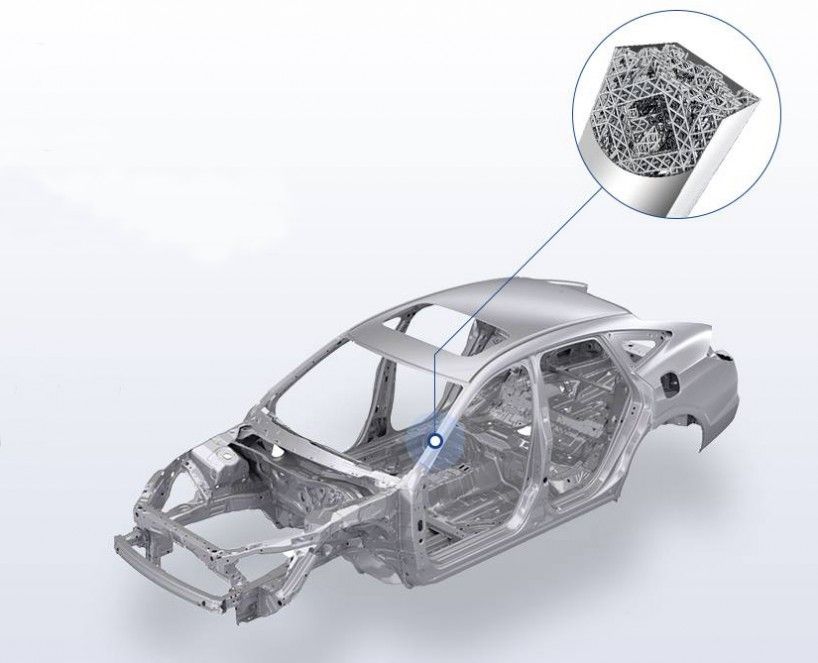
EOS is an additive manufacturing company of German origin, founded as Electro Optical Systems by Dr. Hans J. Langer and Dr. Hans Steinbichler in 1989. EOS operates in the polymer 3D printing market with a range of Selective Laser Sintering (SLS) 3D printers, and is also found in the metal AM industry. The company has developed a range of Direct Metal Laser Sintering (DMLS) 3D printers. It currently has five different models, these include the EOS M 300-4 und EOS M 400 and EOS M100 models.
RenishawRenishaw is a UK additive manufacturing company based in Gloucestershire, in the UK. The company specialises in the creation of industrial 3D printers that create lightweight, customised metal models quickly using powder bed fusion technology. Since entering the metal 3D printing market, Renishaw has launched multiples metal printers. Currently, two of these systems are available, the RenAM 500Q and the RenAM 500s. These models offer a 3D printing solution according to different needs, have different speeds and different construction sizes.
These models offer a 3D printing solution according to different needs, have different speeds and different construction sizes.
Sisma is an Italian 3D printing company operating in different industries since the 1960s, not that long ago it decided to join additive manufacturing. Since their beginnings into the 3D industry they have already launched ten metal 3D printers based on Laser Metal Fusion (LMF) technologies. They introduced their so-called MYSINT series which uses the following technology. Sisma’s 3D printers have been designed to meet the requirements of 4 specific industries: dental, jewelry, medical and industrial production in general.
SLM SolutionsSLM Solutions is a German manufacturer of 3D printers dating from the 1960s, and has since been recognized in the sector of metal 3D printing as one of the leaders in sales. They currently have 6 metal 3D printers on the market: SLM 500, SLM 280 2.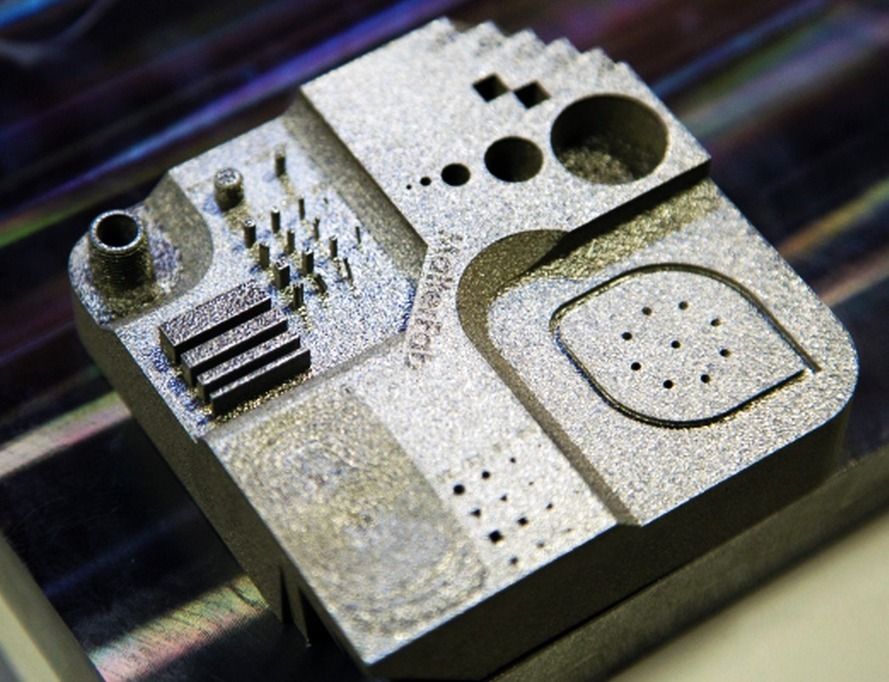 0, SLM 280 Production Series, SLM 800, SLM 125 and NXG XII 600. These 3D printers are based on DMLS technology, patented as SLM Selective Laser Melting (SLM). SLM Solutions’ 3D printers feature multiple laser options, bi-directional coating and closed-loop powder handling to create complex metal parts by solidifying the metal powder layer by layer.
0, SLM 280 Production Series, SLM 800, SLM 125 and NXG XII 600. These 3D printers are based on DMLS technology, patented as SLM Selective Laser Melting (SLM). SLM Solutions’ 3D printers feature multiple laser options, bi-directional coating and closed-loop powder handling to create complex metal parts by solidifying the metal powder layer by layer.
Trumpf is another German manufacturer, specialized in the development of machine tools. Since, the company launched on the 3D printing market and introduced 3D printers based on two different technologies in addition to its laser metal coating technology. First, they launched give printers with Laser Metal Fusion (LMF) technology (a process similar to DMLS), including the TruPrint 3000 model. In addition, they have launched two printers based on Laser Metal Deposition technologies, similar to what we now know as melt deposition. In this category is the TruLaser Cell 3000.
Aconity3DSince 2014, Aconity3D has been selling modular systems for laser powder bed-based 3D printing of metals. AconityONE, AconityMIDI and AconityMINI are basic system types and can be freely configured via add-on modules, from dual to quattro laser systems via various laser outputs and heating systems to sensor-supported process monitoring. They can therefore be tailored to special application requirements and individual budgets. In terms of ease-of-use, Aconity3D is currently developing the 3DMetalWIRE, a wire-based 3D laser printing system without complex powder handling, and has released the AconityMICRO, a compact LBM production system designed for micro L-PBF.
AconityONE, AconityMIDI and AconityMINI are basic system types and can be freely configured via add-on modules, from dual to quattro laser systems via various laser outputs and heating systems to sensor-supported process monitoring. They can therefore be tailored to special application requirements and individual budgets. In terms of ease-of-use, Aconity3D is currently developing the 3DMetalWIRE, a wire-based 3D laser printing system without complex powder handling, and has released the AconityMICRO, a compact LBM production system designed for micro L-PBF.
The AconityONE, LPBF 3D printing solution from Aconity3D
MatsuuraBased in Japan, the metal 3D printer manufacturer currently employs 300 people worldwide since its creation in 1935. It markets hybrid 3D printers that combine CNC milling and subtractive manufacturing processes with additive manufacturing such as powder bed fusion. The company sells two models, the LUMEX Avance-25 and the LUMEX Avance-60.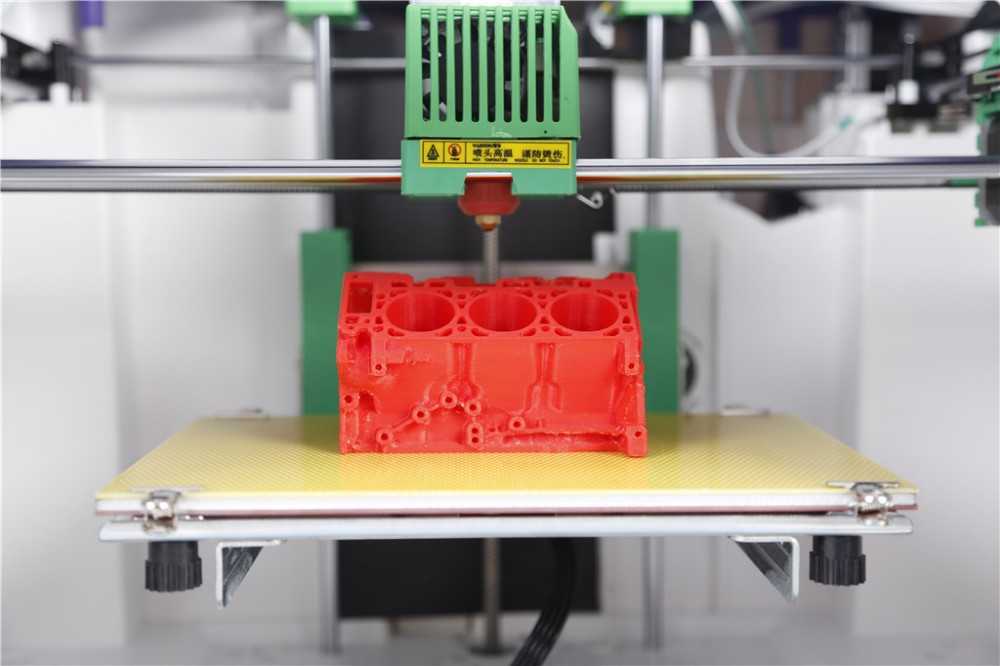
Velo3D is an American manufacturer founded by Benny Buller who wanted to help companies adopt metal technologies by developing the 3D Flow software™. This allows the acceleration of design in 3D printing and enables to collaborate with engineers for the design and preparation of parts for 3D printing. To complete its developments, in 2018 the company created its 3D printer Sapphire™ System, equipped with the patented Intelligent Fusion technology™, based on a powder bed. The machine is capable of printing complex parts using few supports, unlike competing solutions.
Aurora LabsThe Australian manufacturer, which came on the market in 2017, offers one of the most affordable metal printers in the industry at around $65,000. Today, it offers two machines in its range, the S-Titanium Pro and the RMP-1 production system. Their machines are based on Multi-layer Concurrent Printing technology, a technique between Powder Bed Fusion (PBF) and Direct Energy Deposition (DED). According to the manufacturer, the machines are 55 times faster than any other printer based on a powder bed. The post-processing work is not very extensive and the user can easily obtain parts with smooth finishes.
According to the manufacturer, the machines are 55 times faster than any other printer based on a powder bed. The post-processing work is not very extensive and the user can easily obtain parts with smooth finishes.
Sharebot
An Italian company, Sharebot started at the end of 2013 when one of the founders read an article about Andrea Radaelli, one of the first people in Italy to create a 3D printer. They work in a number of industries. They have a number of printers available, though most use FDM. However, they do have one metal printer, the Sharebot metalONE. The Sharebot metalONE uses Direct Metal Laser Sintering and is aimed at the research and production of small and medium sized metal parts. The print area is 65 x 65 x 100 mm (2.6 x 2.6 x 3.9 in) and has a layer high of 5 micron – 200 micron. The printer is compatible with 316L Steel and Cobal Chrome (CoCrMo). Sharebot mentions that the printer could be used in the dental, jewelery, and industry sectors.
Xact Metal
Founded in 2017, Xact is located in Pennsylvania and operates out of Penn State University’s Innovation Park, which is home to some of the leading tech companies in Pennsylvania. Their stated goal is to make metal 3D printing affordable to more people and have a long-term contract with the US Government. They currently have three metal 3D printers available, the XM200C, the XM200S and their latest model the XM300c. While the first two printers use laser-based powder-bed fusion technology through their patnent-pending Xact Core™ technology. The XM300C offers a large build volume (10 x 13 x 13 in; 254 x 330 x 330 mm) and two or four high-precision independent multi-lasers. They claim that this will allow components to be printed up to four times faster. It has two feed chambers to lower build time and increase productivity.
Their stated goal is to make metal 3D printing affordable to more people and have a long-term contract with the US Government. They currently have three metal 3D printers available, the XM200C, the XM200S and their latest model the XM300c. While the first two printers use laser-based powder-bed fusion technology through their patnent-pending Xact Core™ technology. The XM300C offers a large build volume (10 x 13 x 13 in; 254 x 330 x 330 mm) and two or four high-precision independent multi-lasers. They claim that this will allow components to be printed up to four times faster. It has two feed chambers to lower build time and increase productivity.
OR Laser
Founded in 1997, Or Laser have become one of Germany’s leading manufacturers. The company offer several different types of laser-based machines, not limited to 3D printers. In fact, the company only offers one 3D printer. The Creator is a high-end machine purposed for precision components, that relies on laser powder bed fusion (LPBF).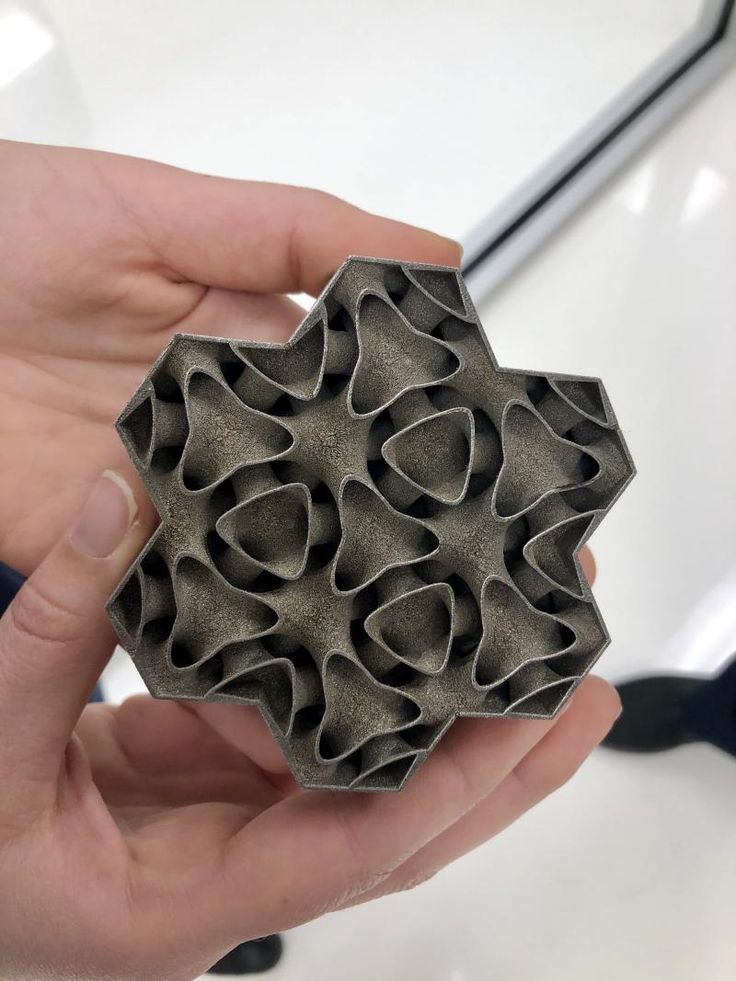 The printer is compatible with a wide range of materials including stainless steel, tool steel, cobalt chrome, aluminium, nickel-based alloys, titanium as well as precious metals. The Creator possesses a build volume of 100 mm x 100 mm and a layer thickness of 20 – 100 μm.
The printer is compatible with a wide range of materials including stainless steel, tool steel, cobalt chrome, aluminium, nickel-based alloys, titanium as well as precious metals. The Creator possesses a build volume of 100 mm x 100 mm and a layer thickness of 20 – 100 μm.
Metal 3D Printer Manufacturers: Directed Energy Deposition (DED)
BeAMBeAM is a French manufacturer based in Strasbourg. With 15 years of R&D experience, BeAM has developed 3 metal 3D printers based on a technology called CLAD for Direct Additive Laser Construction, developed by Irepa Laser. This process offers the possibility of repairing damaged elements since it is possible to build directly on the part. Its range includes the Modulo 250, Modulo 400 and Magic 800. In June 2018, AddUp announced that it had acquired BeAM.
InnsTek, the Korean Metal 3D Printer ManufacturerInssTek is a South Korean manufacturer of metal 3D printers created in 2001, has developed its own technology, Direct Metal Tooling (DMT), which is similar to the directed energy deposition. The manufacturer has launched three standard models, the MX-400, which corresponds to its entry-level model, the MX-600 and the MX-1000. They also have the new customized DMT 3D printer the MX-Grande, their largest model.
The manufacturer has launched three standard models, the MX-400, which corresponds to its entry-level model, the MX-600 and the MX-1000. They also have the new customized DMT 3D printer the MX-Grande, their largest model.
Formalloy and its DED Solutions
Formalloy specializes in the manufacture of machines that rely on direct energy deposition (DED) technology. Since its establishment in 2016, the company have greatly refined this technology and are now capable of producing impressive machinery. Formalloy’s X & L-series DED systems boast a maximum deposition rate of 7kg per hour, 0.5mm resolution, a maximum powder efficiency of 95%, and up to five axes of motion. The company also offer in-process features for monitoring as well as some auxiliary OEM solutions within the field of metal additive manufacturing. These include a metal deposition head, material feeders and lasers. Formalloy also offer a service to manufacture and repair customer parts.
Optomec and its LENS Metal 3D Printing TechnologyOptomec is an American manufacturer of metal 3D printers which, since its creation, has registered more than 35 patents and employed about 60 employees.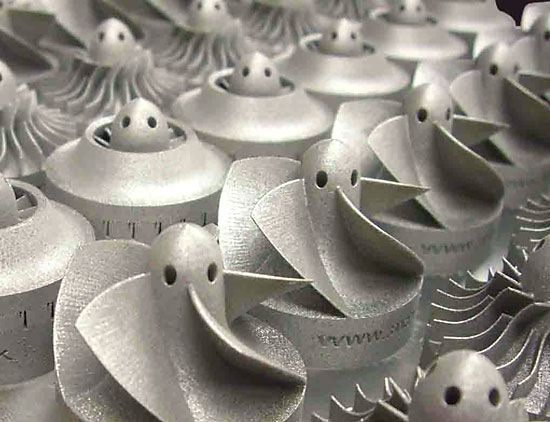 Optomec is known for its LENS metal 3D printing technology, based on the principle of directed energy deposition technology. This company manufactured its first LENS 3D printer in 1998. It currently has 7 metal 3D printing solutions including the LENS 450 and LENS 850-R.
Optomec is known for its LENS metal 3D printing technology, based on the principle of directed energy deposition technology. This company manufactured its first LENS 3D printer in 1998. It currently has 7 metal 3D printing solutions including the LENS 450 and LENS 850-R.
Meltio, A Collaborative Spanish-American Startup in Metal 3D Printing
Meltio was founded in 2019 through the collaboration of two companies in the additive manufacturing sector, Additec and Sicnova. Specializing in the field of 3D metal printing, the startup based between the United States and Spain uses 3E Metal Deposition technology. A process that allows the advantages of powder and wire technologies to be used in a single machine. The company’s flagship product, the M450, offers great flexibility and design freedom thanks to the 3E Metal Deposition process, thanks to its ability to manufacture parts with metal rods or powder. It is also possible to combine the two materials without having to change the nozzle.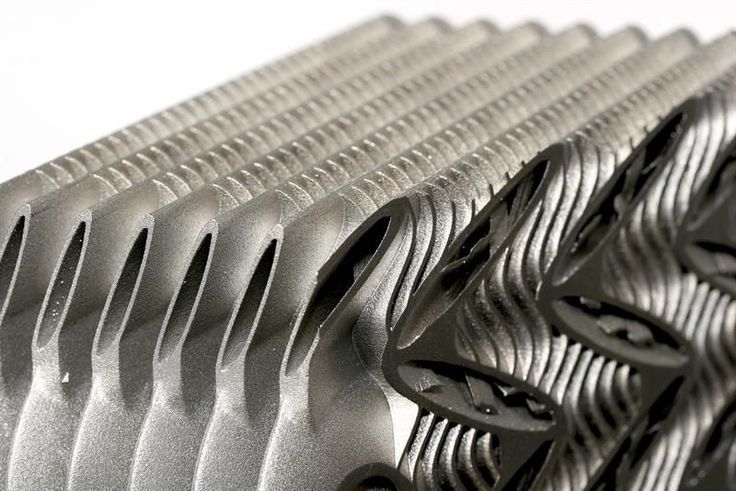 According to the manufacturer, its machines are by far the most accessible in the 3D metal printing market.
According to the manufacturer, its machines are by far the most accessible in the 3D metal printing market.
Sciaky is one of the oldest companies on our list since it was founded in 1939 and at the time supplied welding systems for American aircraft during the Second World War. More recently, Sciaky has developed its Electron Beam Additive Manufacturing (EBEAM) technology. Instead of using metal powder as a source material, it uses metal rods welded via an electron beam. It now has 5 metal 3D printer models, including the EBAM 300 and EBAM 150.
Metal 3D Printers: Material Extrusion
Desktop Metal and its Accessible Desktop Metal 3D Printer OfferingsDesktop Metal is an American company that wants to reduce the cost and speed of additive metal manufacturing. It currently has three metal printers, the Studio System available from $120K, the Production System which costs $420K and the Shop System™. The manufacturer has already received a total investment of $200M, including from Google, BMW and GE. It has developed its own technology called “single pass jetting” which is very similar to metal injection moulding.
The manufacturer has already received a total investment of $200M, including from Google, BMW and GE. It has developed its own technology called “single pass jetting” which is very similar to metal injection moulding.
Markforged was founded in 2013 by Greg Mark and first focused on 3D printing from carbon fibers. Since then, the company has started manufacturing metal additive manufacturing systems with Metal X. What distinguishes it from other machines is its relatively low cost since it is available from $100,000. Its Atomic Diffusion Additive Manufacturing (ADAM) technology should make it easier to create cheaper parts with a printing volume of 250 x 220 x 200 mm. Like Desktop Metal, its process is based on the MIM (Metal Injection Molding) technology already widely used in the industry.
Triditive
Triditive is a Spanish company founded by Mariel Diaz in 2013, which initially focused on training in FDM technologies and the development of 3D printer kits. Today, the startup is best known for its metal additive manufacturing solution called AMCELL. The company’s main goal is to make the adoption of 3D printing easier for today’s industry. Specifically, Triditive’s machine features automated modules based on AMD (Automated Multimaterial Deposition) technology and is capable of manufacturing metal parts by metal extrusion. This is followed by a sintering process to obtain a 100% metal part with improved surface quality. Triditive’s solution has undoubtedly demonstrated the potential of additive manufacturing, and specifically, the manufacture of metal parts with more optimal and flexible processes.
Today, the startup is best known for its metal additive manufacturing solution called AMCELL. The company’s main goal is to make the adoption of 3D printing easier for today’s industry. Specifically, Triditive’s machine features automated modules based on AMD (Automated Multimaterial Deposition) technology and is capable of manufacturing metal parts by metal extrusion. This is followed by a sintering process to obtain a 100% metal part with improved surface quality. Triditive’s solution has undoubtedly demonstrated the potential of additive manufacturing, and specifically, the manufacture of metal parts with more optimal and flexible processes.
Metal 3D Printers: Other Technologies
HP Metal JetMore than a year ago, the American giant HP announced the launch of its first metal solution, the HP Metal Jet. Since its arrival on the market, HP has become one of the leading manufacturers of industrial 3D printers and therefore could not miss the metal. Their metal machine is based on the projection of a binder and a metal powder, solidified layer by layer by a heat source. The binder is removed directly from the 3D printer, while the sintering step must be performed in a suitable furnace.
Their metal machine is based on the projection of a binder and a metal powder, solidified layer by layer by a heat source. The binder is removed directly from the 3D printer, while the sintering step must be performed in a suitable furnace.
Credits: 3Dnatives at Formnext
Digital MetalBought by a coal mining company, Höganäs, a few years ago, Digital Metal is a growing company that has produced more than 200,000 metal objects since its creation. Its metal 3D printer, the DM P2500, is based on Binder Jetting technology, and offers a printing volume of 203 x 180 x 69 mm, on top of not requiring any printing media. It promises fast, flexible and economical production. It is also one of the few companies now offering copper as one of the material offerings.
ExOneExOne is a manufacturing company that specialises in industrial 3D printing machines. The German company’s 3D printers are commonly used in sectors such as automotive, aerospace, heavy equipment, and energy sectors. ExOne 3D printers use Binder Jetting technology with industrial materials to provide solutions at a lower operating cost. Currently, ExOne has five metal printers including the Innovent, InnoventPro 3L, X1 25 Pro, X1 160Pro and ExOne M-Flex. It should be noted however, that since its acquisition by Desktop Metal last year, ExOne has seemed to shift more towards sand printers rather than metal binder jetting.
ExOne 3D printers use Binder Jetting technology with industrial materials to provide solutions at a lower operating cost. Currently, ExOne has five metal printers including the Innovent, InnoventPro 3L, X1 25 Pro, X1 160Pro and ExOne M-Flex. It should be noted however, that since its acquisition by Desktop Metal last year, ExOne has seemed to shift more towards sand printers rather than metal binder jetting.
XJet is our only Israeli manufacturer, founded by Hanan Gothait. The company is best known for its innovative NanoParticle Jetting technology that could revolutionize metal and ceramic manufacturing. Its 3D printers allow you to create a metal object using a material composed of fine metal droplets suspended in a liquid ink. The Israeli manufacturer currently produces two printers, the X Carmel 700 and the X Carmel 1400. The video below shows the patented technology:
In 2020, Xerox entered the additive manufacturing market by acquiring startup Vader Systems. A year later, it unveiled its ElemX machine based on a 3D liquid metal printing process. This solution uses metal wires that are melted layer by layer to obtain the final part. For the moment, it is compatible with aluminum, but other metals should gradually become available. The ElemX is currently being tested by the U.S. Navy to see if it will enable them to print spare parts at sea.
Pollen AM Unveiled a New Metal 3D PrinterThe French Pollen AM recently unveiled two new 3D printers, a ceramic and a metal. The latter is also based on the indirect metal manufacturing process MIM (for Metal Injection Molding) and uses metal granules – 316L stainless steel, titanium and 17-4 stainless steel. Their 3D metal printer, the PAM Series M, is available from €68,900, one of the lowest prices on the market.
Their 3D metal printer, the PAM Series M, is available from €68,900, one of the lowest prices on the market.
Exaddon’s 3D metal printer, the CERES Print System can print metal with a resolution as fine as 1 µm, offering a very high level of detail. It has a chamber volume of 100 x 70 x 60 mm and prints at room temperature, with no post-processing necessary. Additionally, it can also print overhanging parts without any need for support structures, a rarity among metal AM technologies.
ADMATEC, The Metal 3D Printer from a Research ProjectADMATEC is a Dutch company founded in November 2013 after the success of a research project in 2012. It has developed its 3D metal printer, the AdMetalFlex 130, which is based on Digital Light Processing (DLP) technology. The machine mixes a photosensitive resin and a metallic powder, and uses a laser to fuse them in the same way as its 3D ceramic printer.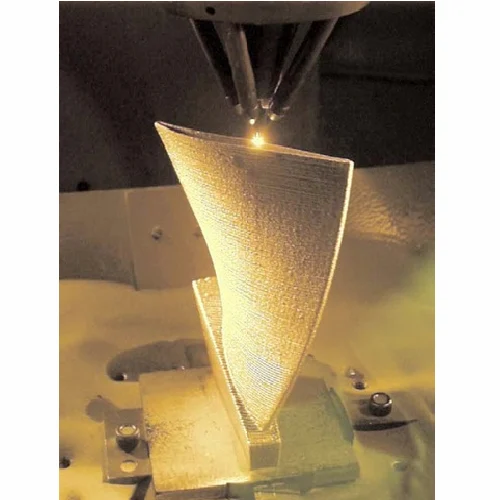 The company has also introduced the Admaflex 300, a multi-material 3D printer that can print with both advanced ceramic and metals.
The company has also introduced the Admaflex 300, a multi-material 3D printer that can print with both advanced ceramic and metals.
SPEE3D, Producing the World’s Fastest Metal 3D Printer
SPEE3D was founded by Byron Kennedy and Steven Camilleri with the goal of making metal part manufacturing easier. So it’s hardly surprising that their SPEE3D printers enable a low-cost manufacturing process for metal additives worldwide. That’s because the power of kinetic energy is used for the process, rather than expensive high-powered lasers or gases. The company offers four products, ACTIVAT3D Copper, LightSPEE3D, WarpSPEE3D and SPEE3Dcell, with the latter three each being metal printers. The LightSPEE3D and WarpSPEE3D 3D printers can print metal parts with diameters of 350 mm x 300 mmm and 1000 mm x 700 mm, respectively, and are the world’s first metal 3D printers with patented SPEE3D technology. The manufacturer particularly emphasizes the excellent speed and low price. The SPEE3Dcell is integrated with a heat treatment furnace and a CNC 3-axis milling machine and is perfect for prototyping.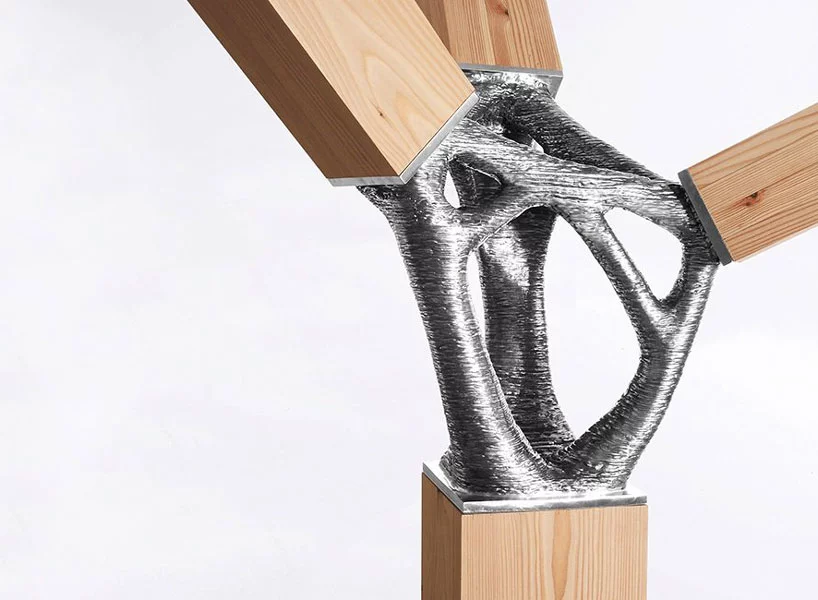 The last product that SPEE3D offers is the ACTIVAT3D copper. This is an antimicrobial copper that can be quickly applied using SPEE3D technology. In the current Covid 19 pandemic, antimicrobial copper surfaces can be incredibly useful for manufacturers, especially those working in the medical field.
The last product that SPEE3D offers is the ACTIVAT3D copper. This is an antimicrobial copper that can be quickly applied using SPEE3D technology. In the current Covid 19 pandemic, antimicrobial copper surfaces can be incredibly useful for manufacturers, especially those working in the medical field.
Inetyx, A Made in France Metal 3D Printer
Inetyx is a French manufacturer who has developed a metal printer which uses the AMW (Additive Micro Welding) process. In the place of using powder, this machine deposits metal strips of rectangular section which will be micro-welded by laser. The AMW 300X printer has a printing volume of 300 x 300 x 300mm. You can see more in the video below:
What do you think of these metal 3D printer manufacturers? Which is your favourite? Let us know in a comment below or on our Facebook and Twitter pages! Sign up for our free weekly Newsletter, all the latest news in 3D printing straight to your inbox!
Metal 3D Printing - The Essential Guide
There is no hotter trend in 3D printing today than metal.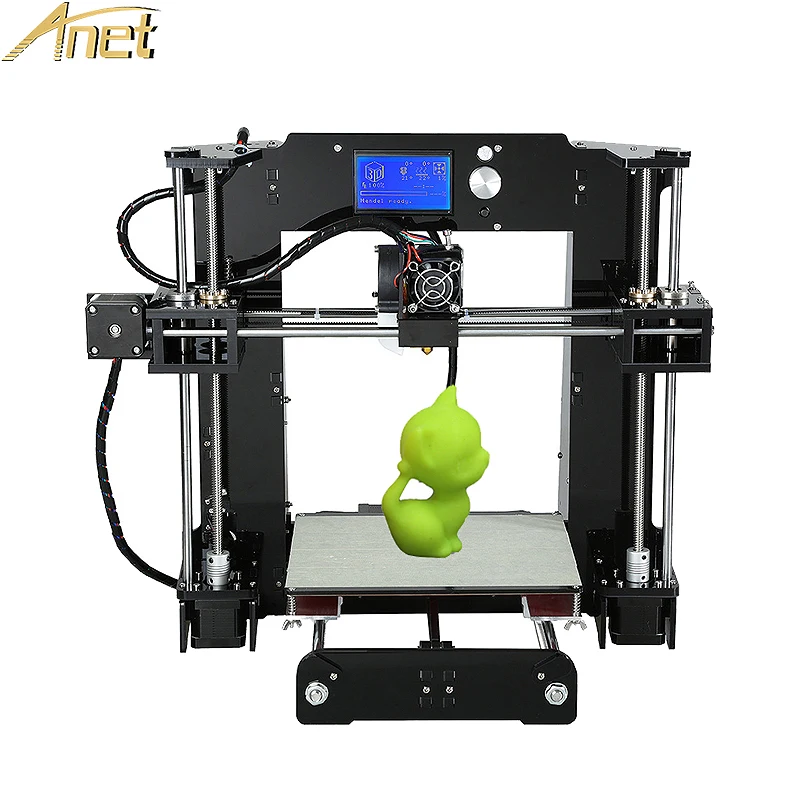 We will talk about metal printing at home, how it is done on an industrial scale, about technologies, applications, printers, processes, prices and materials.
We will talk about metal printing at home, how it is done on an industrial scale, about technologies, applications, printers, processes, prices and materials.
Metal 3D printing has grown in popularity over the past few years. And this is quite natural: each material offers a unique combination of practical and aesthetic qualities, can be suitable for a wide range of products, prototypes, miniatures, decorations, functional details and even kitchen utensils.
The reason metal 3D printing has become so popular is because the printed objects can be mass-produced. In fact, some of the printed parts are just as good (if not better) than those made with traditional methods.
In traditional production, working with plastic and metal can be quite wasteful - there is a lot of waste, a lot of excess material is used. When an aircraft manufacturer makes metal parts, up to 90% of the material is simply cut off. 3D printed metal parts require less energy and waste is reduced to a minimum.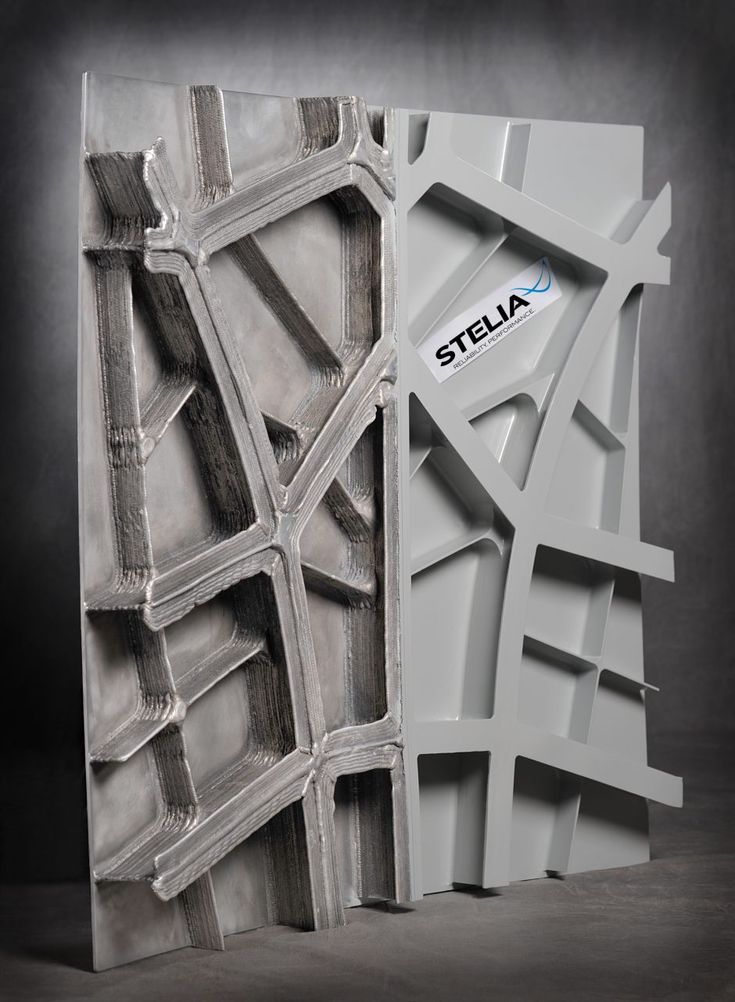 It is also important that the final 3D printed product is up to 60% lighter than a traditional part. Billions of dollars could be saved in the aviation industry alone—mainly through weight savings and fuel savings.
It is also important that the final 3D printed product is up to 60% lighter than a traditional part. Billions of dollars could be saved in the aviation industry alone—mainly through weight savings and fuel savings.
So, what do we need to know about metal 3D printing?
Metal 3D printing at home
If you want to make objects at home that will look like metal, your best bet is to look at metalized PLA filaments (Photo: colorFabb)
Where to start if you want to print metal objects at home ? Given the extreme heat required for true metal 3D printing, a conventional FDM 3D printer will not be able to do this.
It is unlikely that in this decade it will be possible to print with liquid metal at home. Until 2020, you probably will not have a printer specialized for this purpose at home. But in a few years, as nanotechnology advances, we may see significant developments in new applications. This can be 3D printed with conductive silver, which will emit in much the same way as it does in 2D home printers. It will even be possible to mix different materials like plastic and metal in one object.
It will even be possible to mix different materials like plastic and metal in one object.
Materials for metal 3D printing at home
Even though you can't print actual metal objects at home, you can turn to plastic filament that has metal powders added to it. ColorFabb, ProtoPasta and TreeD Filaments all offer interesting metal-PLA composite filaments. These filaments, containing a significant percentage of metal powders, remain pliable enough to be printed at low temperatures (200 to 300 Celsius) on virtually any 3D printer. At the same time, they contain enough metal to make the final object look, feel, and even weigh like metal. Iron-based filaments even rust under certain conditions.
But you can go further. Typically, up to 50 percent metal powder is added to 3D printing filament. Dutch company Formfutura says they have achieved 85 percent metal powder with 15 percent PLA. These filaments are called MetalFil Ancient Bronze and Metalfil Classic Copper. They can be printed even at "moderate" temperatures from 190 to 200 degrees Celsius.
Metallic 3D Printing Filament Spools, in this case from SteelFill and CopperFill colorFabb (Steel and Bronze), Ancient Bronze (Ancient Bronze) from Formfutura
Here are the key points about metal printing at home
- Gets a unique metal surface and look
- Ideal for jewelry, figurines, housewares, replicas
- Durability
- Objects are not flexible (structure dependent)
- Objects do not dissolve
- Not considered food safe
- Typical print temperature: 195 - 220°C
- Extremely low shrinkage on cooling
- No table heating required
- Printing complexity is high, requires fine tuning of nozzle temperature, feed rate, post-processing
Preparing Your Home Printer for Metal 3D Printing
Since getting metal 3D prints is more difficult than usual, you may need to upgrade your 3D printer nozzle, especially if you are an entry-level printer.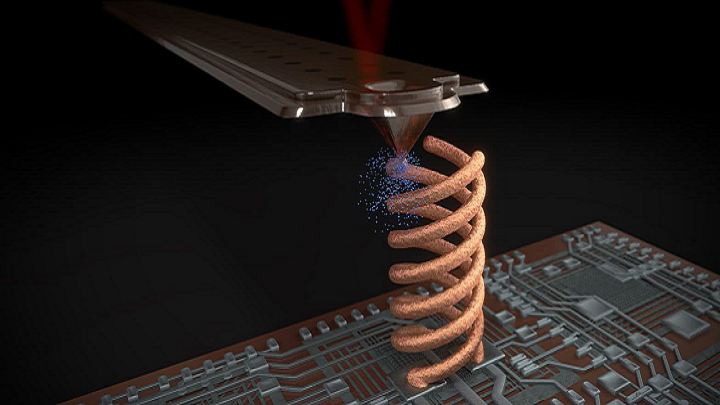 The metal filament wears it out quickly. There are hard-wearing hot-ends (like the E3D V6) that are themselves made of metal. They can withstand high temperatures and fit most printers. Be prepared for the fact that the nozzles will have to be changed frequently, because the metal filament is very abrasive.
The metal filament wears it out quickly. There are hard-wearing hot-ends (like the E3D V6) that are themselves made of metal. They can withstand high temperatures and fit most printers. Be prepared for the fact that the nozzles will have to be changed frequently, because the metal filament is very abrasive.
You will also need to take care of the final finishing of the surface (cleaning, grinding, oiling, waxing or priming) so that the printed metal object shines as it should.
How much does metal filament for 3D printing cost?
And what about metal filament for 3D printing? - you ask. Here are a few examples:
- ColorFabb's 750 gram Bronzefill spool is $56.36
- ColorFabb 750g Copperfill Coil $56.36
- Protopasta's Polishable Stainless Steel PLA Composite is $56 for 56 grams of
- Protopasta's Rustable Magnetic Iron PLA Composite is $34.99 for 500 grams of
Industrial metal 3D printing
But what if you want a better result or even full metal 3D printing? Should a real "metal" 3D printer be purchased for business needs? We wouldn't recommend it - unless you're going to be doing it every day. A professional metal 3D printer is expensive: EOS or Stratasys devices will cost you 100-500 thousand dollars. In addition, the costs will be even greater, since you will have to hire an operator, a worker to maintain the machine, as well as to finalize the printouts (polishing, for example). Just a note: In 2016, an affordable metal 3D printer didn't exist.
A professional metal 3D printer is expensive: EOS or Stratasys devices will cost you 100-500 thousand dollars. In addition, the costs will be even greater, since you will have to hire an operator, a worker to maintain the machine, as well as to finalize the printouts (polishing, for example). Just a note: In 2016, an affordable metal 3D printer didn't exist.
Lowering Metal 3D Printing Costs
If you are not going to start a metal 3D printing business, but still need a professionally 3D printed metal part, it is best to contact the appropriate company that provides such services. 3D printing services like Shapeways, Sculpteo and iMaterialise offer direct metal printing.
They currently work with the following metal materials in 3D printing:
- aluminum
- steel
- brass
- copper
- bronze
- sterling silver
- gold
- platinum
- titanium
If you are a jeweler, you can also order wax models for casting in precious metals.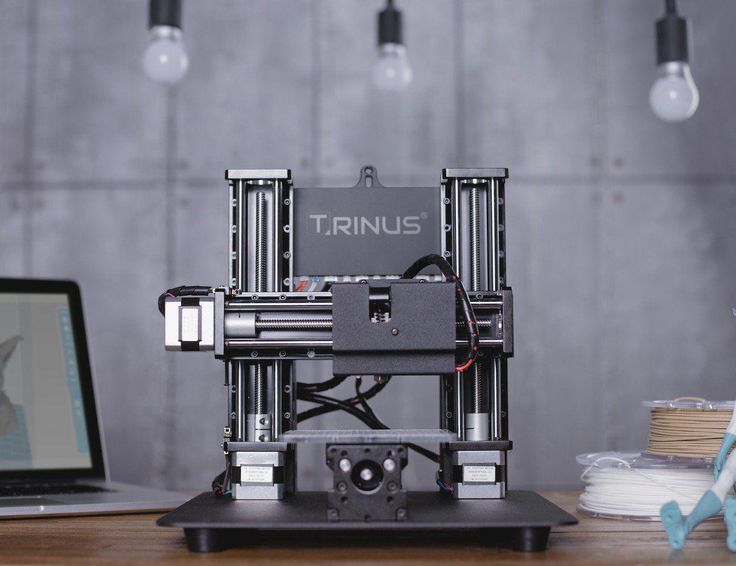
If we talk about wax models, then in most cases they (with subsequent melting) are used when printing with metals (including gold and silver). Not all orders are carried out directly by these firms. They usually turn to other metal 3D printing companies to complete the order. However, the number of such services around the world is growing rapidly. In addition, metal 3D printing techniques are becoming more and more common in companies that offer such services.
The reason big companies love 3D printing so much is that it can be used to build fully automated lines that produce "topologically optimized" parts. This means that it is possible to fine-tune the raw materials and make the components thicker only if they must withstand heavy loads. In general, the mass of parts is significantly reduced, while their structural integrity is preserved. And this is not the only advantage of this technology. In some cases, the product turns out to be significantly cheaper and affordable for almost everyone.
Please note that metal 3D printing requires special CAD programs for modeling. It is worth paying attention to the recommendations of Shapeways - 3D printing metal guidelines. To delve further into the topic, check out Statasys’ information on related 3D printers and the nuances of metal 3D printing.
Here are some examples of Benchy test model prices for metal 3D printing:
- Metal plastic: $22.44 (former alumide, PLA with aluminium)
- Stainless steel: $83.75 (plated, polished)
- Bronze: $299.91 (solid, polished)
- Silver: $713.47 (solid, mirror polished)
- Gold: $87.75 (gold plated, polished)
- Gold: $12,540 (solid, 18K gold)
- Platinum: $27,314 (solid, polished)
As you might expect, solid metal 3D printing prices are quite high.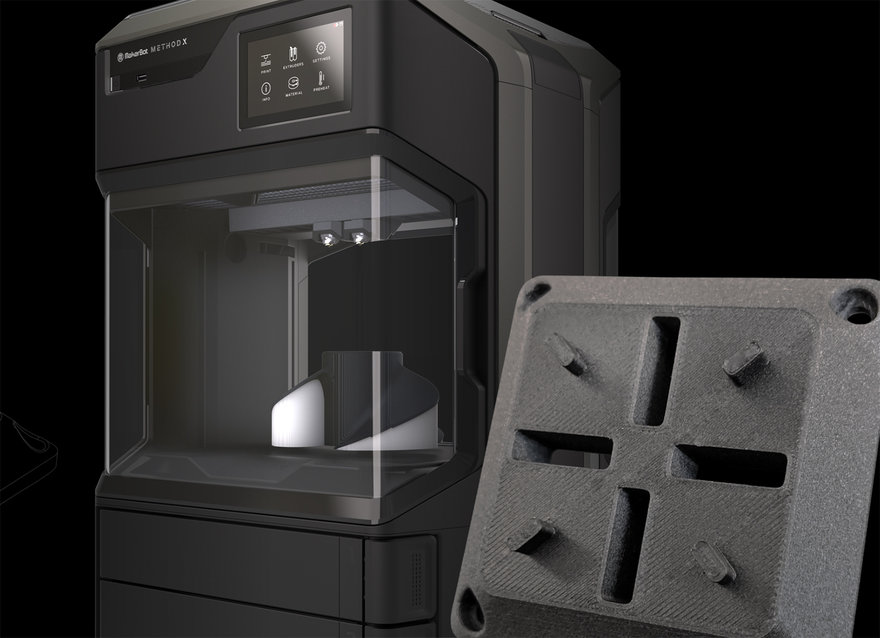
Metal 3D printing. Applications
GE LEAP aircraft engine parts 3D printed at Avio Aero (Photo: GE)
There are several industries already using 3D printers to make everyday objects - you may not even know that these objects are printed.
- The most common case is surgical and dental implants, which are considered the best option for patients today. Reason: they can be tailored to individual needs.
- Another industry is jewelry. Here, most manufacturers have abandoned resin 3D printing and wax casting, switching directly to metal 3D printing.
- In addition, the aerospace industry is becoming more and more dependent on 3D printed metal objects. The Italian company Ge-AvioAero was the first to do all-metal 3D printing. It manufactures components for LEAP aircraft engines.
- Another industry targeting metal 3D printing is the automotive industry. BMW, Audi, FCA are seriously considering this technology, not only for prototyping (3D printing has been used for this for quite some time), but also for making real parts.
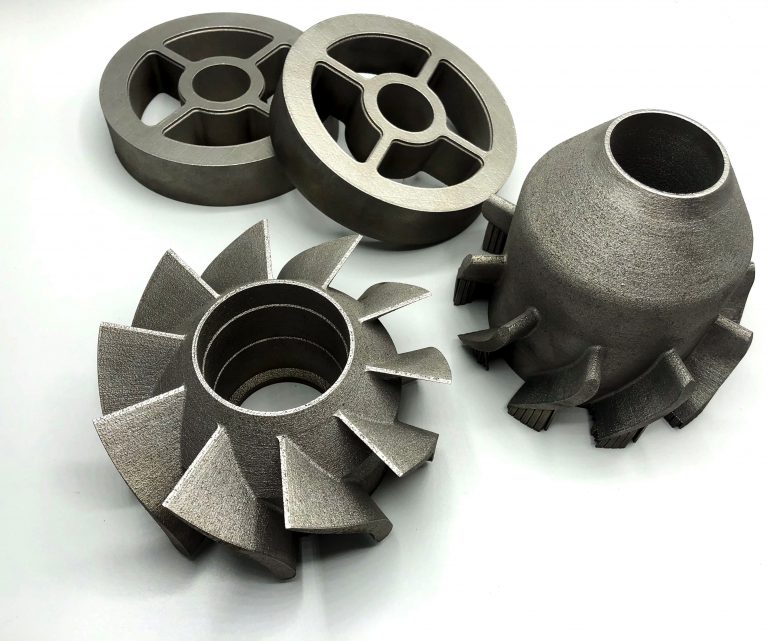
Before metal 3D printing really takes off, however, there are some hurdles to overcome. And first of all, this is a high price, which cannot be made lower than during molding. Another problem is the low production speed.
Metal 3D printing.
Technologies
Most metal 3D printing processes start with an “atomized” powder
You can talk a lot about “metal” 3D printers, but their main problems remain the same as any other 3D – printers: software and hardware limitations, material optimization and multimateriality. We won't talk too much about the software, we'll just say that most of the major specialized software companies, such as Autodesk, SolidWorks and solidThinking, try to emphasize as much as possible the fact that as a result of the 3D metal printing process, you can get any shape you want.
In general, printed metal parts can be as strong as parts made by traditional processes. Parts made using DMLS technology have mechanical properties equivalent to casting. In addition, the porosity of objects made on a good "metal" 3D printer can reach 99.5%. In fact, manufacturer Stratasys claims that 3D printed metal parts perform above industry standards when tested for density.
Parts made using DMLS technology have mechanical properties equivalent to casting. In addition, the porosity of objects made on a good "metal" 3D printer can reach 99.5%. In fact, manufacturer Stratasys claims that 3D printed metal parts perform above industry standards when tested for density.
3D printed metal can have different resolutions. At the highest resolution, layer thickness is 0.0008 - 0.0012" and X/Y resolution is 0.012 - 0.016". The minimum hole diameter is 0.035 - 0.045". formed layer)
The metal 3D printing process used by most relevant large companies today is called Powder Bed Fusion. This name indicates that some source of energy (a laser or other energy beam) melts an "atomized" powder (i.e., a metal powder that is carefully ground into spherical particles), resulting in layers of a printed object.
There are eight major manufacturers of metal 3D printers in the world that already use this technology; while we are talking here, there are more and more such companies.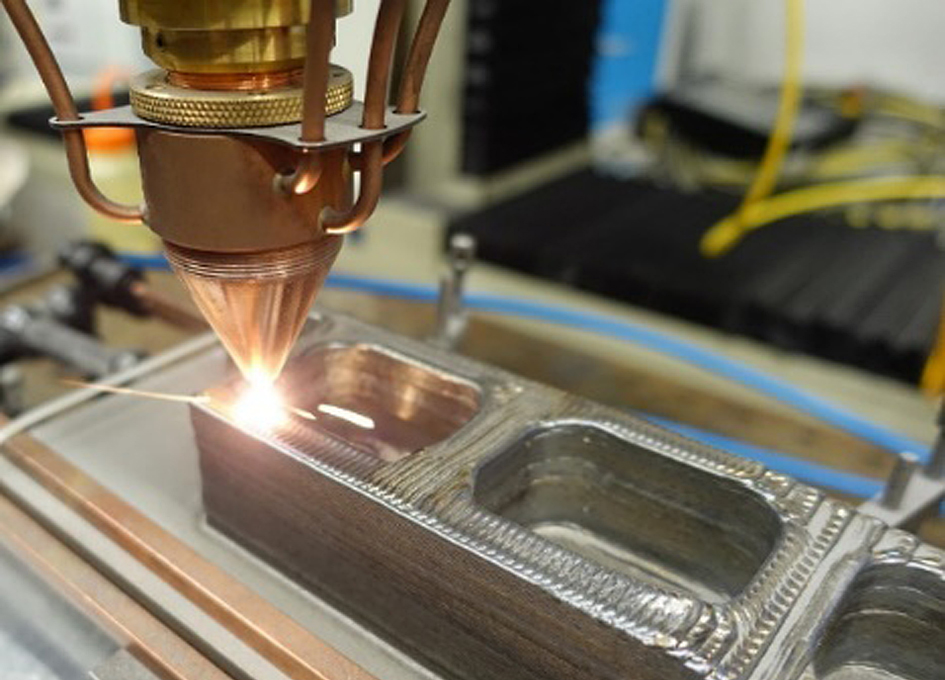 Most of them are in Germany. Their technologies are called SLM (Selective Laser Melting - selective laser fusion) or DMLS (Direct Metal Laser Sintering - direct metal laser sintering).
Most of them are in Germany. Their technologies are called SLM (Selective Laser Melting - selective laser fusion) or DMLS (Direct Metal Laser Sintering - direct metal laser sintering).
Metal 3D-printing process No. 2:
Binder Jetting (spraying the binder)
under 3DP technology EXONE Metal objects are printed due : ExOne)
Another professional approach that also uses a powder base is called Binder Jetting. In this case, the layers are formed by gluing metal particles together and then sintering (or fusing) them in a high-temperature furnace, just like it is done with ceramics.
Another option, which is similar to working with ceramics, is mixing metal powder into metal paste. A pneumatically extruded 3D printer (similar to a syringe bioprinter or an inexpensive food printer) forms 3D objects. When the required shape is reached, the object is sent to the furnace, i.e. in the mountains
This approach is used in the Mini Metal Maker, apparently the only inexpensive "metal" 3D printer.
Metal 3D printing process #3: 9Metal Deposition This is not entirely true. Of course, on some desktop device, simply fusing metal threads onto the base will not work. However, very large steel companies can do it. And they do. There are two options for working with "metal surfacing".
One is called DED (Directed Energy Deposition) or Laser Cladding. Here, a laser beam is used to melt the metal powder, which is slowly released and solidifies as a layer, and the powder is fed using a robotic arm.
Normally the whole process takes place in a closed chamber, but the MX3D project used conventional 3D printing techniques to build a full-size bridge. Another option for metal fusion is called EBAM (Electron Beam Additive Manufacturing - additive electron beam technology), which is essentially soldering, in which a very powerful electron beam is used to melt 3 mm titanium wire, and the molten metal forms very large finished structures. As for this technology, its details are known so far only to the military.:quality(80)/images.vogel.de/vogelonline/bdb/1531600/1531683/original.jpg)
Metallic 3D printing. Metals
3D Printing Metal #1: Titanium
Pure titanium (Ti64 or TiAl4V) is one of the most commonly used metals for 3D printing and is definitely one of the most versatile, strong and lightweight. Titanium is used both in the melting process in a preformed layer and in the process of spraying a binder and is used mainly in the medical industry (for the manufacture of personal prostheses), as well as in the aerospace industry, automotive and machine tools (for the manufacture of parts and prototypes). But there is one problem. Titanium is very reactive and explodes easily in powder form. Therefore, it is necessary that titanium 3D printing takes place in a vacuum or in an argon environment.
3D printing metal #2: Stainless steel
Stainless steel is one of the cheapest 3D printing metals. At the same time, it is very durable and can be used in a wide range of manufacturing and even artistic and design applications. The type of steel alloy used also contains cobalt and nickel, is very difficult to break, and has a very high elasticity. Stainless steel is used almost exclusively in industry.
The type of steel alloy used also contains cobalt and nickel, is very difficult to break, and has a very high elasticity. Stainless steel is used almost exclusively in industry.
3D Printing Metal #3: Inconel
Inconel is a superalloy manufactured by Special Metals Corporation and is a registered trademark. The alloy consists mainly of nickel and chromium and is very heat resistant. Therefore, it is used in the oil, chemical and aerospace (for black boxes) industries.
3D Printing Metal #4: Aluminum
Due to its lightness and versatility, aluminum is very popular in 3D printing. Aluminum alloys are commonly used.
3D Printing Metal #5: Cobalt Chrome
gap). It is most commonly used in the manufacture of turbines, dental and orthopedic implants, where 3D printing has become the dominant technology.
3D printing metal #5. Copper and bronze
With some exceptions, copper and bronze are used in wax melting processes, rarely in layer melting. The fact is that these metals are not very suitable for industry, they are more often used in the manufacture of works of art and crafts. ColorFabb offers both metals as the basis for a special metal filament.
The fact is that these metals are not very suitable for industry, they are more often used in the manufacture of works of art and crafts. ColorFabb offers both metals as the basis for a special metal filament.
3D printing metal #6. Iron
Iron, incl. magnetic, also mainly used as an additive to PLA-based filaments, which are produced, for example, by ProtoPasta and TreeD.
3D printing metal #7. Gold, Silver, and Other Precious Metals
Most preformed layer companies can 3D print precious metals such as gold, silver, and platinum. Here, along with the preservation of the aesthetic properties of materials, it is important to achieve optimization of work with expensive starting powder. Precious metal 3D printing is required for jewelry, medical applications and electronics.
Metallic 3D printing. Printers
Do not hesitate - the purchase of a metal 3D printer will not pass without a trace on your budget. It will cost at least 100-250 thousand dollars. Here is a list of a variety of "metal" printers, some of which can be found in firms providing 3D printing services.
It will cost at least 100-250 thousand dollars. Here is a list of a variety of "metal" printers, some of which can be found in firms providing 3D printing services.
Metal 3D Printer #1:
Sciaky EBAM 300 - Metal Filament Printing
If you need to print really large metal structures, Sciaky's EBAM technology is your best bet. By order, the device can be built in almost any size. This technique is used mainly in the aerospace industry and the military.
Sciaky's largest production printer is the EBAM 300. It prints objects in a volume of 5791 x 1219 x 1219 mm.
The company claims the EBAM 300 is also one of the fastest industrial 3D printers on the market. A three-meter-sized titanium part for an aircraft is printed on it in 48 hours, while the material consumption is about 7 kg per hour. In general, forged parts that usually take 6-12 months to complete can be made in 2 days with this 3D printer.
The metal layers are first cut and then ultrasonically welded. The largest Fabrisonic 7200 printer operates in a volume of 2 x 2 x 1.5 m. The metal powder 3D printer is the Concept Laser XLine 1000. It has a modeling volume of 630 x 400 x 500 mm and is the size of a house.
Its German company, one of the main suppliers of 3D printers for aerospace giants like Airbus, recently introduced a new machine, the Xline 2000.
This machine uses two lasers and has a working volume of 800 x 400 x 500 mm. Uses LaserCUSING laser technology (a variant of selective laser fusion) from Concept Laser, which allows you to print alloys of steel, aluminum, nickel, titanium, precious metals and even some pure substances (titanium and stainless steel).
Metallic 3D printing. Services
There are more than 100 companies worldwide offering metal 3D printing services. We list the most popular services for consumer needs.
Metal 3D Printing Service #1: Shapeways
The world's most popular 3D printing service, Shapeways offers two types of services.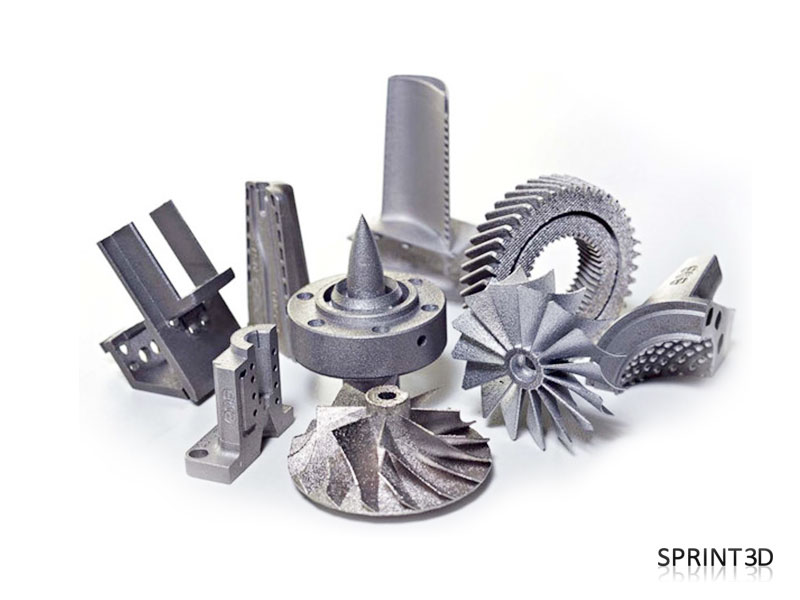 As a consumer, you can choose from a wide range of professionally designed objects, customize them, and then have them printed to your specifications. Like other 3D printing services, Shapeways offers a platform for designers to sell and print their work. Shapeways is also a good place for rapid prototyping: customers benefit from industrial-grade printers (EOS, 3D Systems) and personal technical support.
As a consumer, you can choose from a wide range of professionally designed objects, customize them, and then have them printed to your specifications. Like other 3D printing services, Shapeways offers a platform for designers to sell and print their work. Shapeways is also a good place for rapid prototyping: customers benefit from industrial-grade printers (EOS, 3D Systems) and personal technical support.
3D printing metals: aluminium, brass, bronze, gold, platinum, precious metal plating, silver, steel. There are also wax molds for jewelry purposes.
Metal 3D Printing Service #2: Sculpteo
Like Shapeways and i.materialise, Sculpteo is an online 3D printing service that allows anyone to upload 3D models and send them to fabrication in a wide range of materials . Like its competitors, Sculpteo provides a platform for hobbyists and professionals to showcase and sell their designs. The stable of Sculpteo printers includes highly professional machines from 3D Systems, EOS, Stratasys and ZCorp.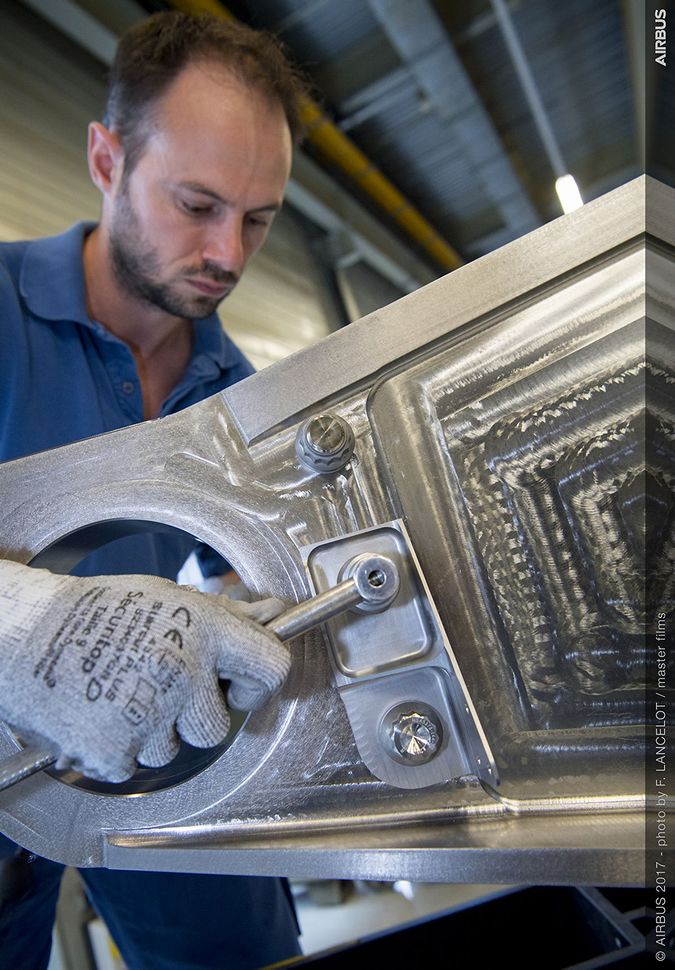 Extensive technical documentation will help identify design flaws and select the right material for the project.
Extensive technical documentation will help identify design flaws and select the right material for the project.
Metals for 3D printing: alumide (plastic with aluminum particles), brass, silver.
Metal 3D Printing Service #3: iMaterialise
Materialise is a company that works with industrial customers to prototyp 3D printed products. For casual users and designers, Materialize offers an online 3D printing service called i.materialise. As with Shapeways, this service allows anyone to upload their 3D designs and print them out. Once an object has been uploaded and successfully printed, a designer can list it for sale either in the gallery of the i.materalise online store or by embedding some code into their website.
3D printing metals: alumide (plastic with aluminum powder), brass, bronze, copper, gold, silver, steel, titanium.
Metal 3D Printing Service #4: 3D Hubs
Through 3D Hubs, you can search for individuals and companies that offer 3D printing services in your area, upload STL files (which are immediately evaluated for defects ) and contact service providers directly to get the job done. The online 3D printing service also allows you to sort offers by materials, customer rating, distance and many other parameters. Whatever object you wish to print, there is likely to be someone nearby who can print it. A significant number of materials can be printed in industrial quality, such materials have an HD mark in the search field.
The online 3D printing service also allows you to sort offers by materials, customer rating, distance and many other parameters. Whatever object you wish to print, there is likely to be someone nearby who can print it. A significant number of materials can be printed in industrial quality, such materials have an HD mark in the search field.
3D printing metals: aluminium, bronze, cobalt-chromium, stainless steel, titanium.
Largest listed companies in the 3D printing sector
3D printing has been around since the late 1980s. At the end of 2018, the size of the 3D printing market, according to various estimates, reached from $9 trillion to $10 trillion. Calculations were made based on the cost of producing printers, components and 3D printing.
In the coming years, expert agencies (IMARC, Inkwood Reasearch, Marketwatch, etc.) predict a steady growth of at least 20% per year. In this scenario, by the end of 2025, the scale of the entire 3D printing segment will reach at least $ 32 trillion - 3. 5 times higher than the current values.
5 times higher than the current values.
The outlook for the sector makes it attractive to investors. Consider the largest and most stable companies in this segment, whose shares can be considered for purchase and take their rightful place in your portfolio.
1. HP Inc Capitalization: $29.3 billion
HP manufactures computers, printers, tablets and a number of other devices. The release of 3D printers is not the main specialization of the company, but HP occupies one of the leading positions in the 3D printing segment. In 2014, the company developed the Multi Jet Fusion technology, which allowed to increase productivity and reduce the cost of professional (industrial) 3D printers. The technology has been successfully applied in mass production of printers since 2016.
In 2017, HP opens the world's first 3D lab, equipped with printers in various build states and essential tools for device experimentation. The company has opened up the first opportunities to test new materials in 3D printers to increase efficiency.
The company has opened up the first opportunities to test new materials in 3D printers to increase efficiency.
In 2018, HP will open a joint manufacturing center with China's Guangdong in Guangdong, China, which is the largest such 3D printing project in Asia Pacific and Japan. The facility is equipped with ten high-tech next-generation HP Metal Jet printers to produce parts and prototypes for industrial customers.
2. Proto L abs (NYSE: PRLB). Capitalization: $2.56 billion
The company was founded in 1999 and has more than 10 production sites in seven countries. The head office is located in Minnesota. The company specializes in the production of parts for other manufacturing companies. The corporation positions itself as the fastest in the world in the production of custom prototypes and finished parts for industrial customers. In 2014, Proto Labs launched 3D printed parts.
In addition to 3D printing, the company produces CNC (Computer Numerical Control) parts, injection molding and sheet metal parts. In 2015, Proto Labs bought Alphaform (specializing in innovative 3D printing) with divisions in Germany, Finland and the UK. This allowed the company to expand its 3D printing business in Europe. To diversify its business and introduce sheet metal manufacturing, the company acquired Rapid Manufacturing in 2017 for $120 million. 9 Systems ( NYSE: DDD). Capitalization: $1.01 billion
In 2015, Proto Labs bought Alphaform (specializing in innovative 3D printing) with divisions in Germany, Finland and the UK. This allowed the company to expand its 3D printing business in Europe. To diversify its business and introduce sheet metal manufacturing, the company acquired Rapid Manufacturing in 2017 for $120 million. 9 Systems ( NYSE: DDD). Capitalization: $1.01 billion
3D Systems was founded by inventor Chuck Hull in 1986, becoming the world's first 3D printing company. It produces 3D printers and components, including software, and also designs them. The company provides services at various stages of design, development and production of products for many large industries, including aerospace, automotive, medical, entertainment and other areas. It should be noted that the corporation also works with retail consumers. Business diversification within the 3D segment makes the company financially stable.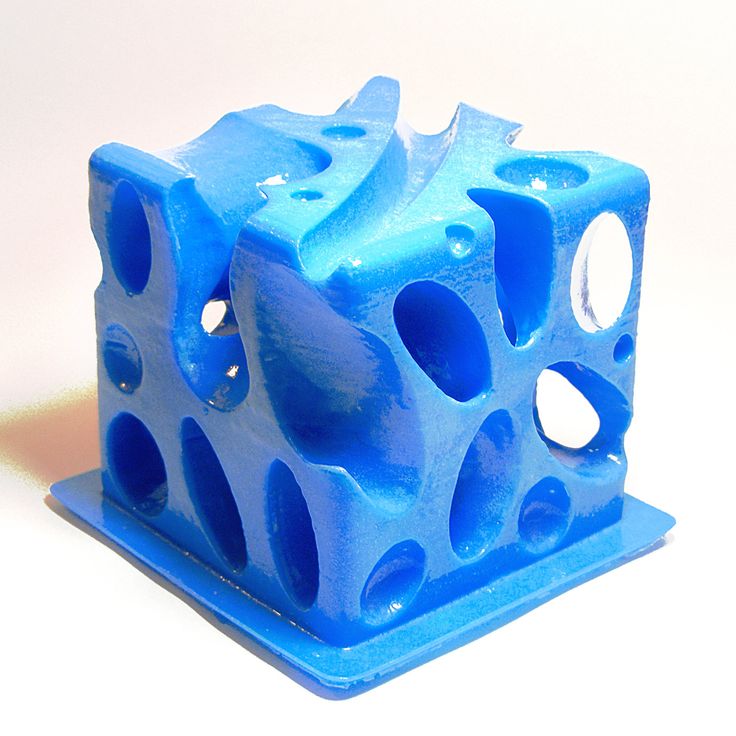
3D Systems is headquartered in Rock Hill, South Carolina, USA. The number of employees of the company exceeds 2600 (as of the end of 2018), which is twice as high as five years ago.
4. Stratasys ( NASDAQ: SSYS). Capitalization: $0.98 billion
The company was founded in 1989 by Scott Crump. The technology was based on the idea of creating the shape of a figure by layering after Scott decided in 1988 to make a toy for his daughter using a gun filled with glue. At 1992 Stratasys released its first 3D Modeler product.
Today, Stratasys manufactures industrial and desktop 3D printers and related accessories. The range of services includes installation, maintenance and training in working with printers. The company serves various industries by developing technologies for the production of prototypes and parts. The first public offering of Stratasys shares took place in 1994 at $5 per share and a total volume of $5.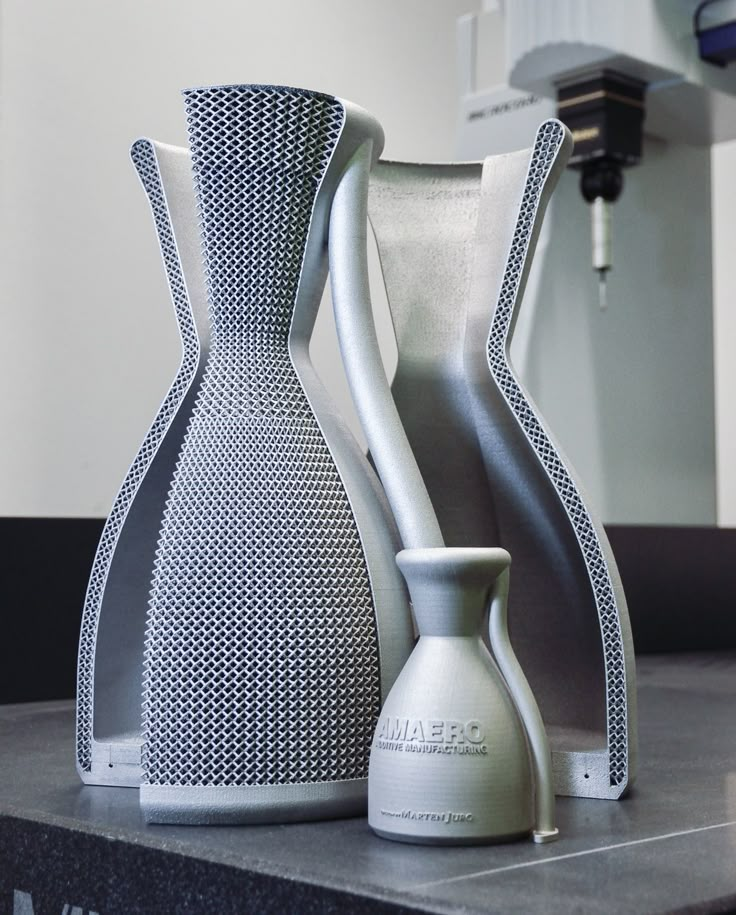 7 million. The head office is located in Minnesota.
7 million. The head office is located in Minnesota.
5. Materialize Capitalization: $0.88 billion
Materialize was incorporated in 1990 in Leuven, Belgium and specializes in 3D printing services and software for 3D printers. Like other leaders in this sector, Materialize works with various major manufacturers around the world (Adidas, HP), but a significant share of the business is in cooperation with medical centers and institutions. The company's portfolio includes more than 150 medical patents. Materialize offices are located in 18 countries, including one office located in the CIS in Ukraine.
Comparison of issuers
The most valuable company among the leaders is HP, which is due to the scale and diversification of the company's business in the entire technology segment. 3D Systems, Stratasys and Materialize specialize exclusively in the 3D printing segment, while their capitalization is on the same level. Proto Labs has three businesses besides 3D printing and is in the middle of our list in terms of capitalization.
Proto Labs has three businesses besides 3D printing and is in the middle of our list in terms of capitalization.
The most undervalued company in terms of EV/EBITDA is HP, but it is not correct to compare it with other issuers by this multiplier due to the differentiation of the company's products and services. 3D Systems has the highest EV/EBITDA, and from this point of view, the paper is not so attractive to buy. Moreover, over the past four years, 3D Systems shares have been in a stable sideways trend without technical prerequisites for growth.
The remaining three companies, in our opinion, may be of interest. At the same time, if your long-term goal is to get the maximum increase from the growth of the 3D printing sector, then investing in HP shares is less preferable compared to other securities. After all, the reaction of the shares of companies with a direct specialization is more sensitive to changes in the sector. Below are the consensus forecasts of investment houses according to Reuters, according to which Stratasys (14.